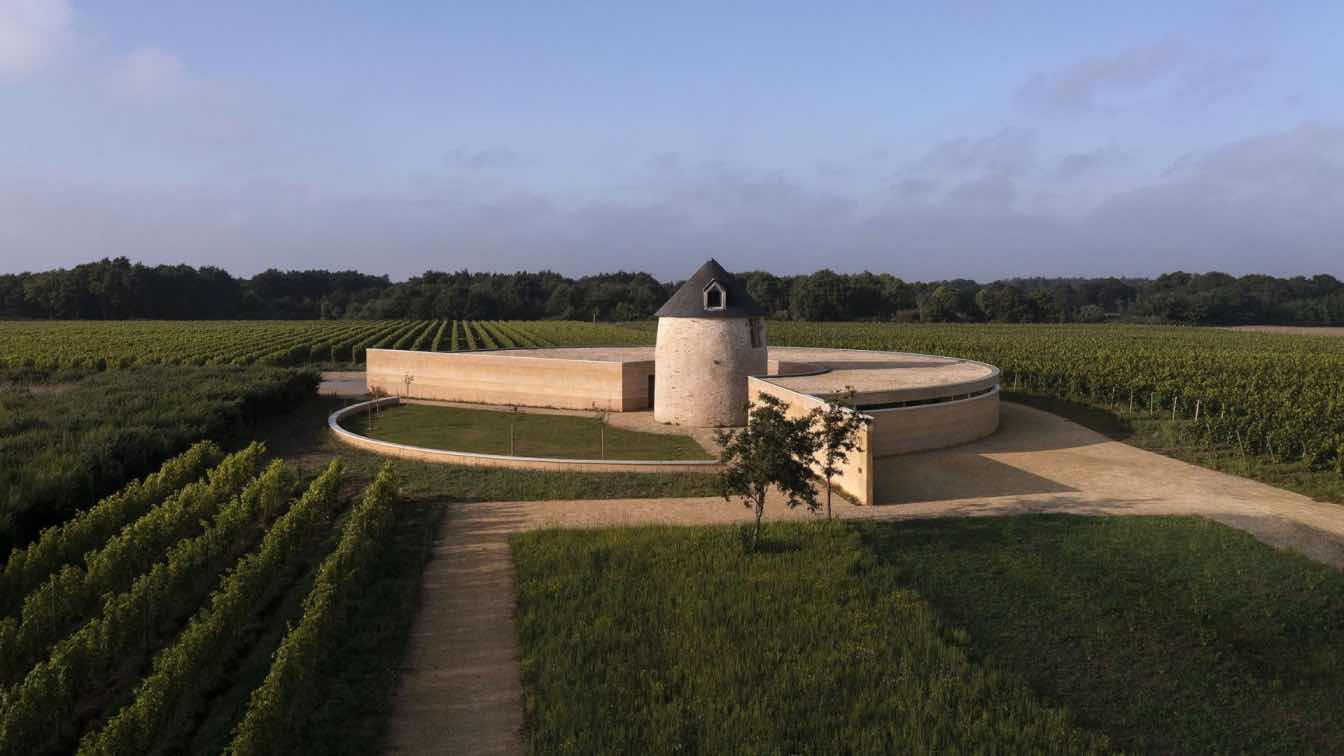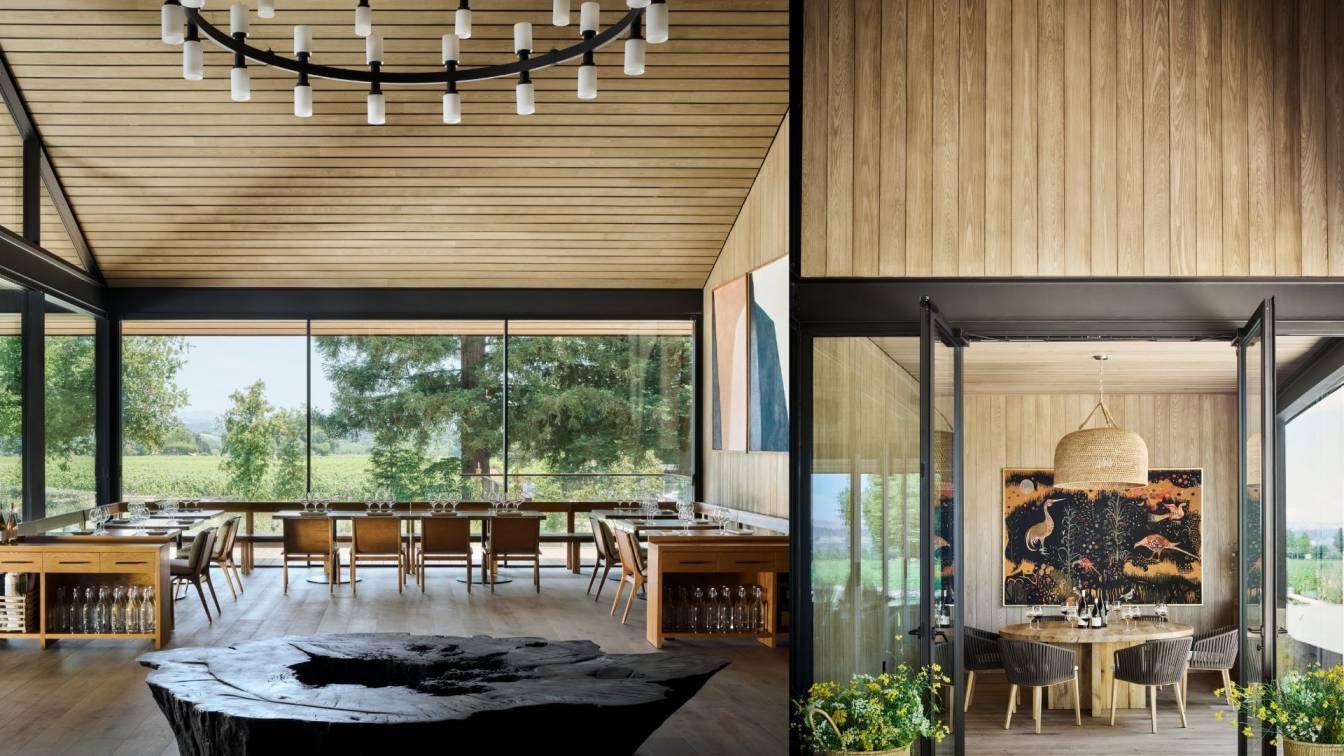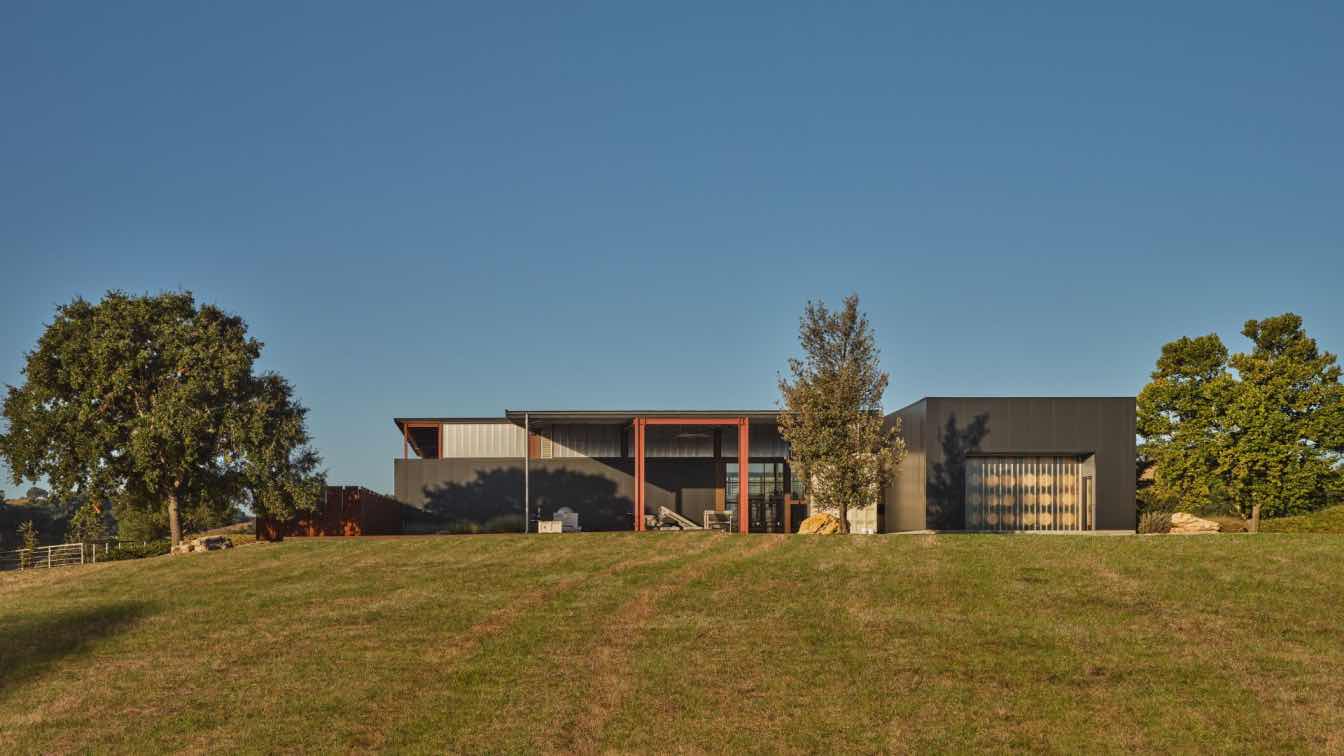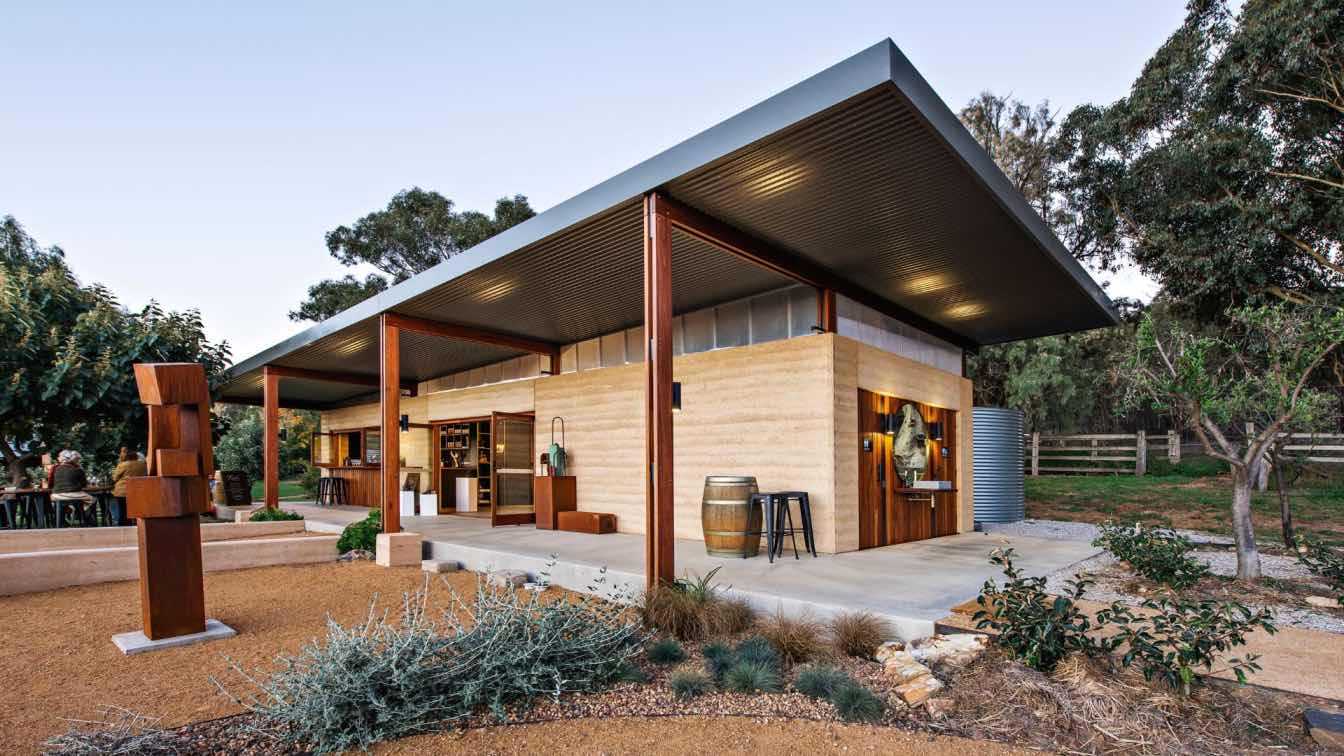In Sarzeau, on the Rhuys peninsula, the municipality and the Parc Naturel Régional du Golfe du Morbihan (Gulf of Morbihan Regional Nature Park) have undertaken to relaunch wine production after a 70-year hiatus, an activity that had flourished for centuries until the 1950s. Guillaume Hagnier and Marie Devigne, selected following a call for applications from wine- growers, arrived at the Moulin de Poulhors in 2020, a site chosen by the town hall, and on which the couple are planting 25,000 vines after selecting three grape varieties : Chardonnay, Chenin, and Cabernet Franc.
The mill was already there, but a professional and welcoming wine cellar was needed, one that also had to embody a contemporary story of the place. Architect Carmen Maurice succeeded brilliantly in drawing from a universal wine-making imagination to create an architectural language that enhances the spirit of the location. The building, which wraps around the renovated mill, is compact. Its fluid layout optimizes the winemaking process, from harvesting in the north to delivery in the south. This design allows the press to work by gravity, while ensuring good thermal inertia.
The lime plaster, crafted by a heritage artisan, gives the building a mystical feeling of immanence as visitors approach the main entrance from the south or from the hiking trails to the northwest. This material, with its unexpected plasticity, has allowed for the creation of living walls that express their « terroir » and whose appearance changes with the weather and light, much like wine. Its surface, made of a unique plaster mix containing local sands, evokes the proximity to the ocean.
The wine cellar, a haven of silence and maturation, is also a place for sharing and tasting. The project reflects these two aspects, blending private and public spaces. To the east, a built enclosure blends modestly into the landscape, housing the work of the winemakers. To the west, the walls of the cellar open generously to the surroundings, offering an unobstructed view of the two neighboring mills. The spaces for sharing, tasting, and museography highlight the evolution of winemaking practices and invite visitors to discover the history of the vineyards in Sarzeau.
The first harvest took place in 2022, producing nearly 6,500 bottles stamped “dantelezh”, Breton for lace. Or delicacy in architecture.
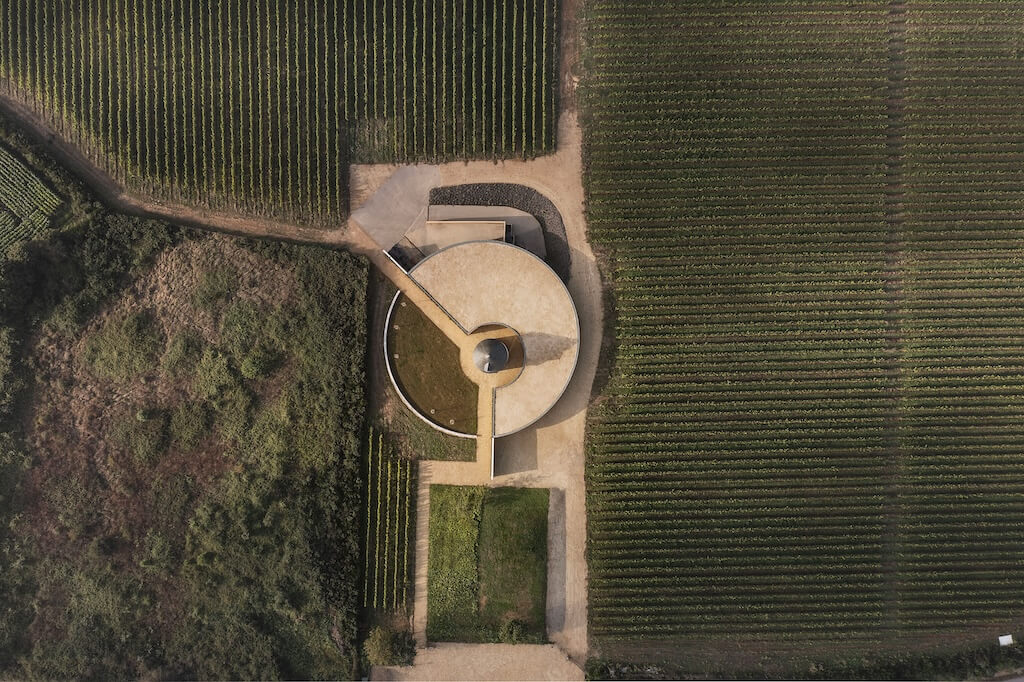

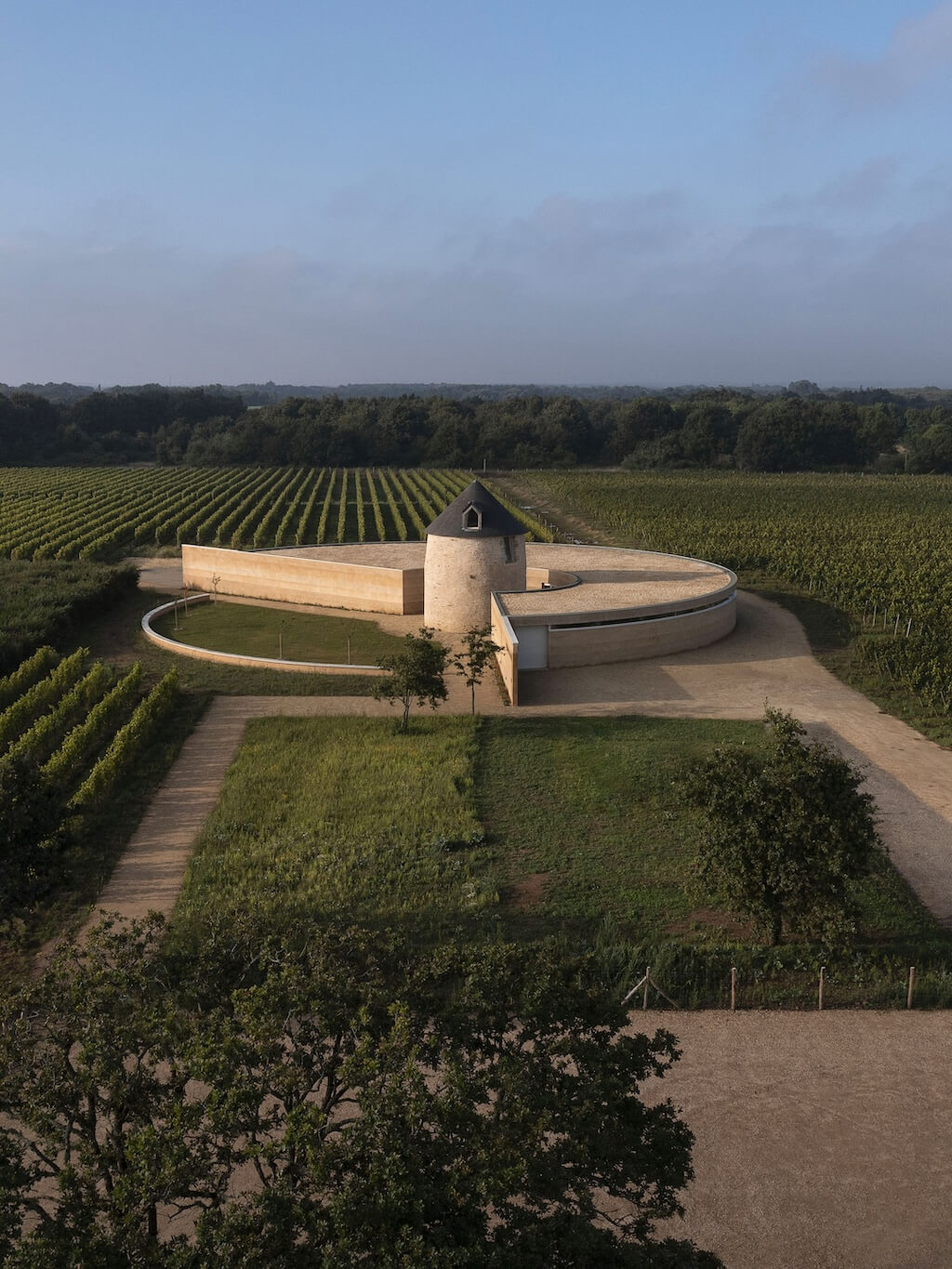



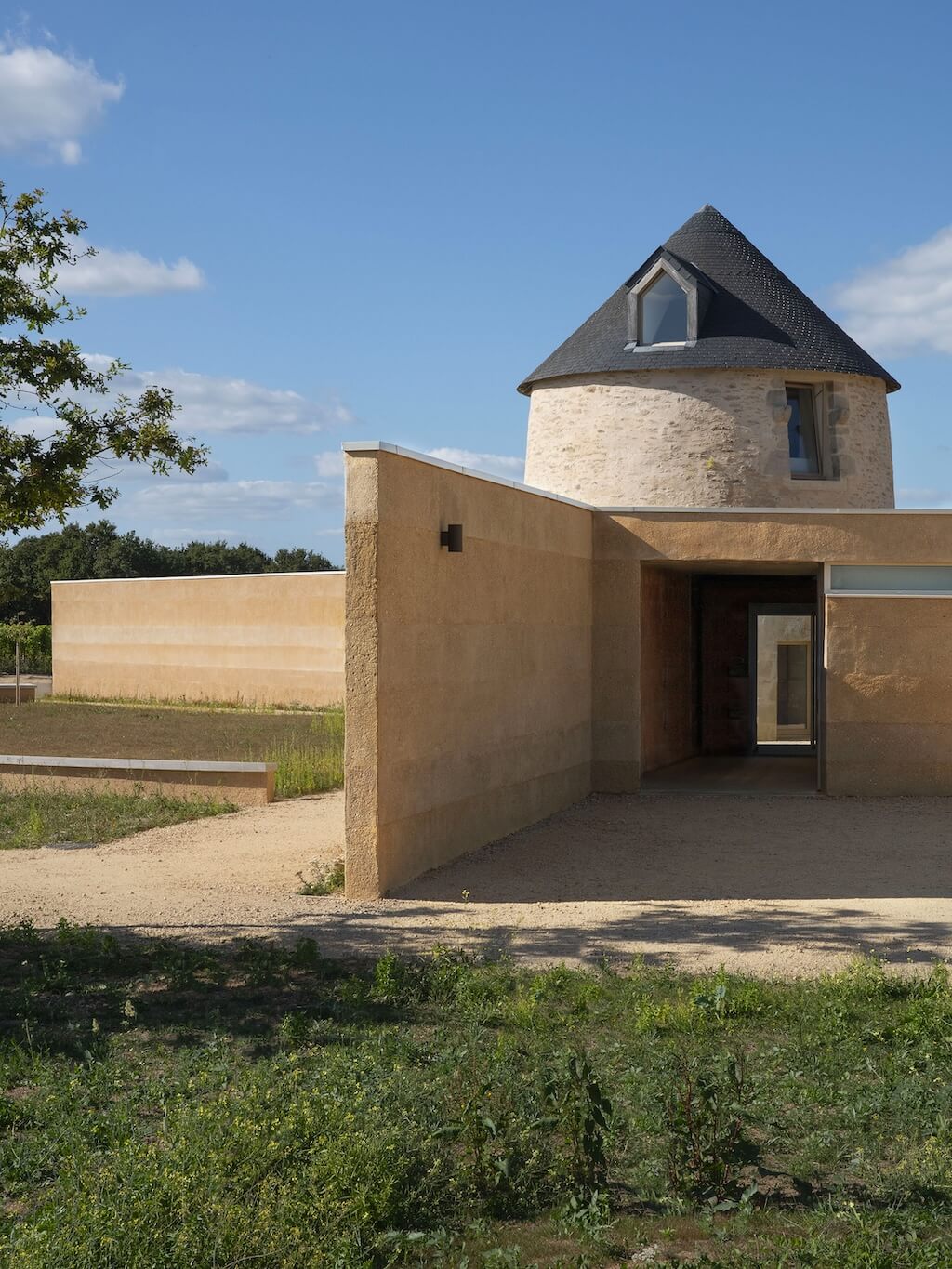
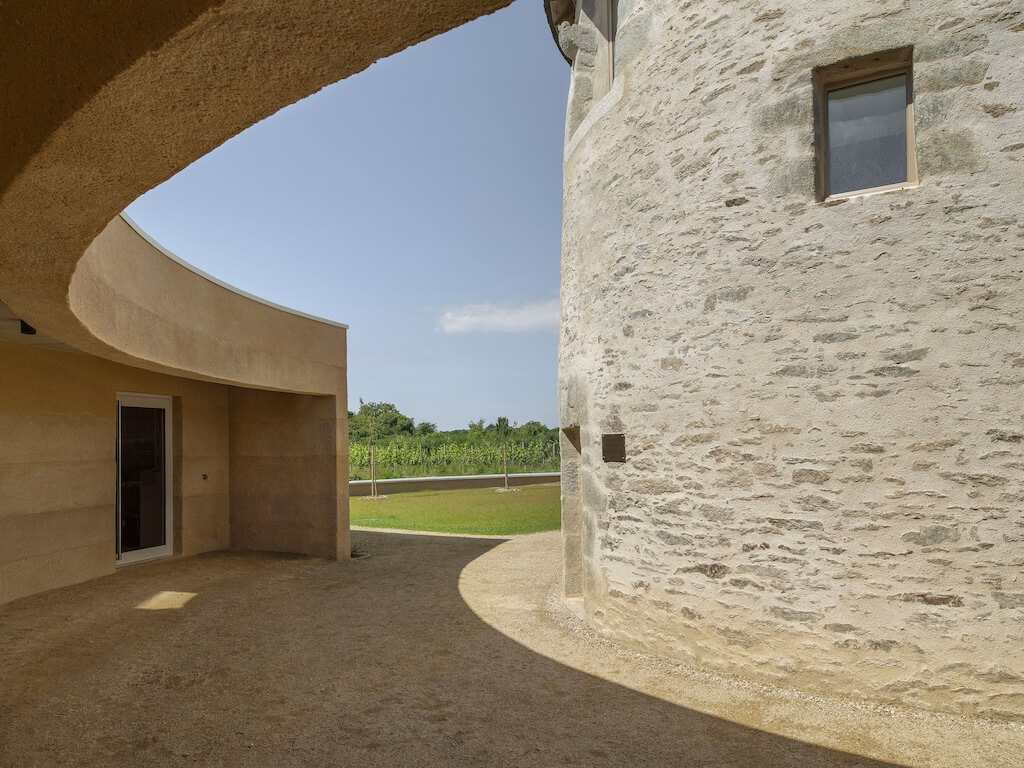
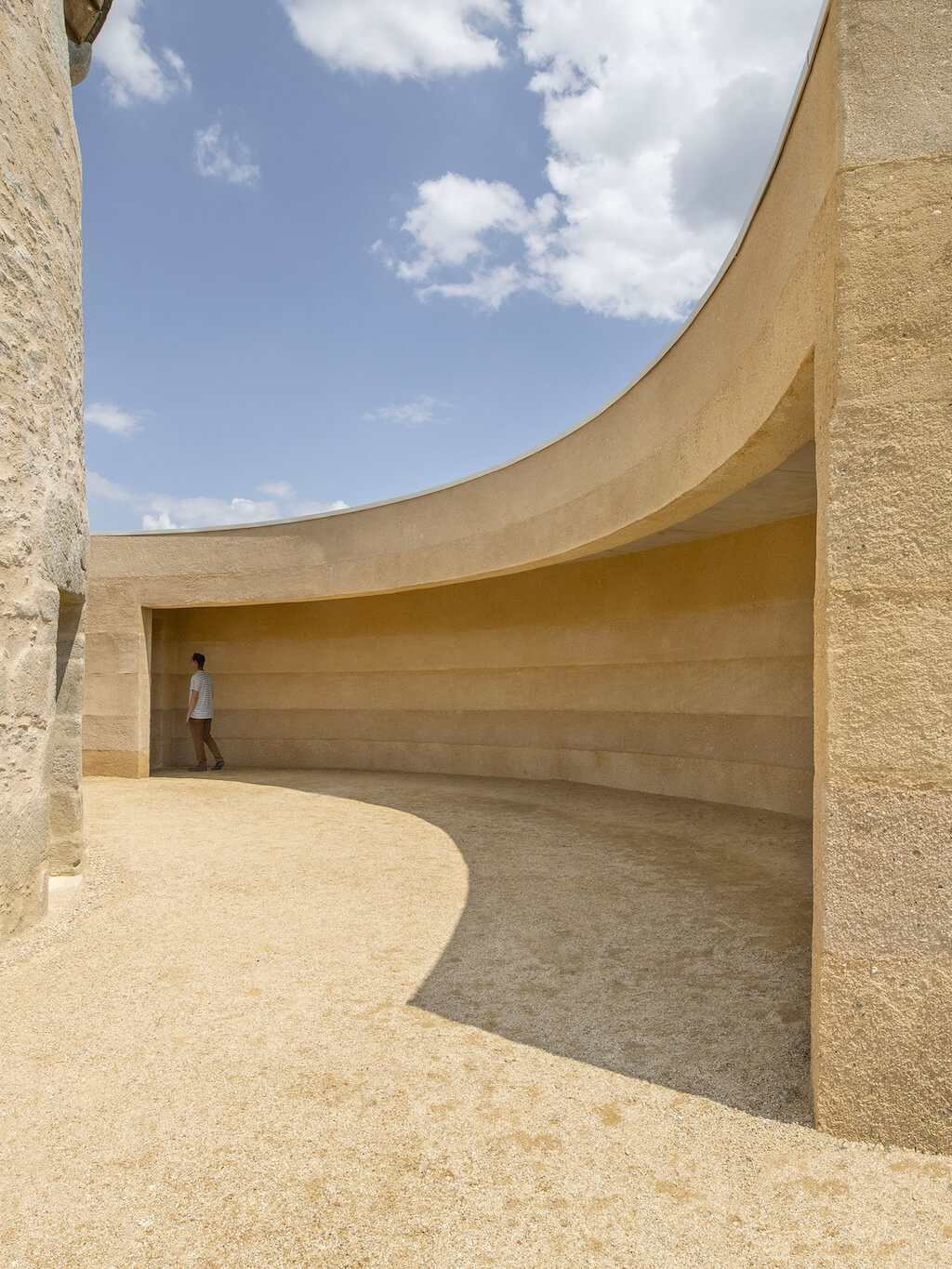


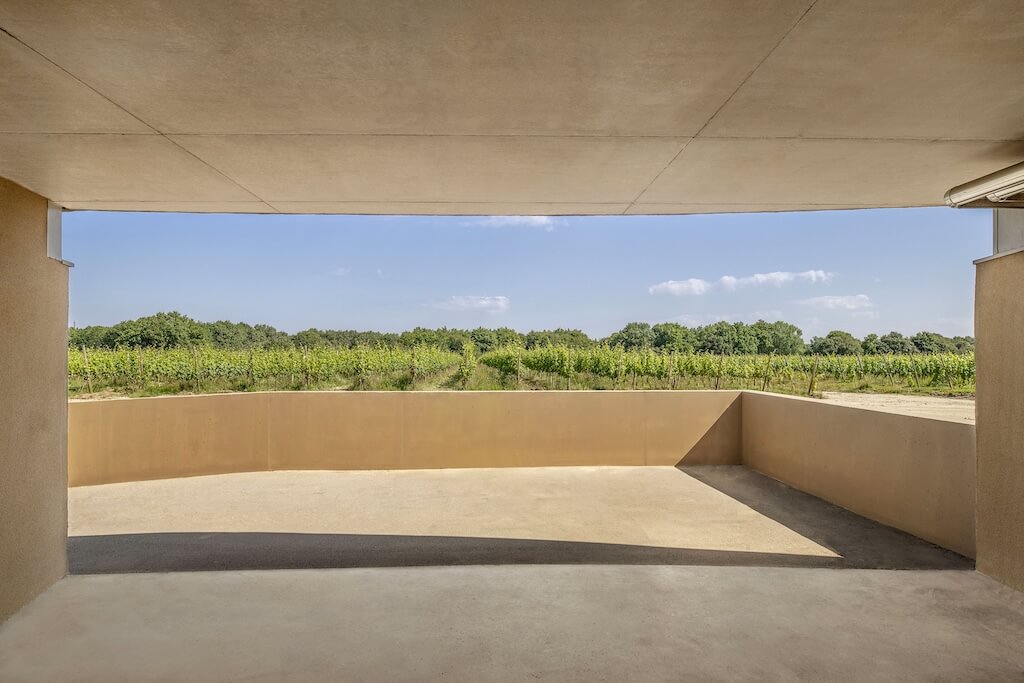

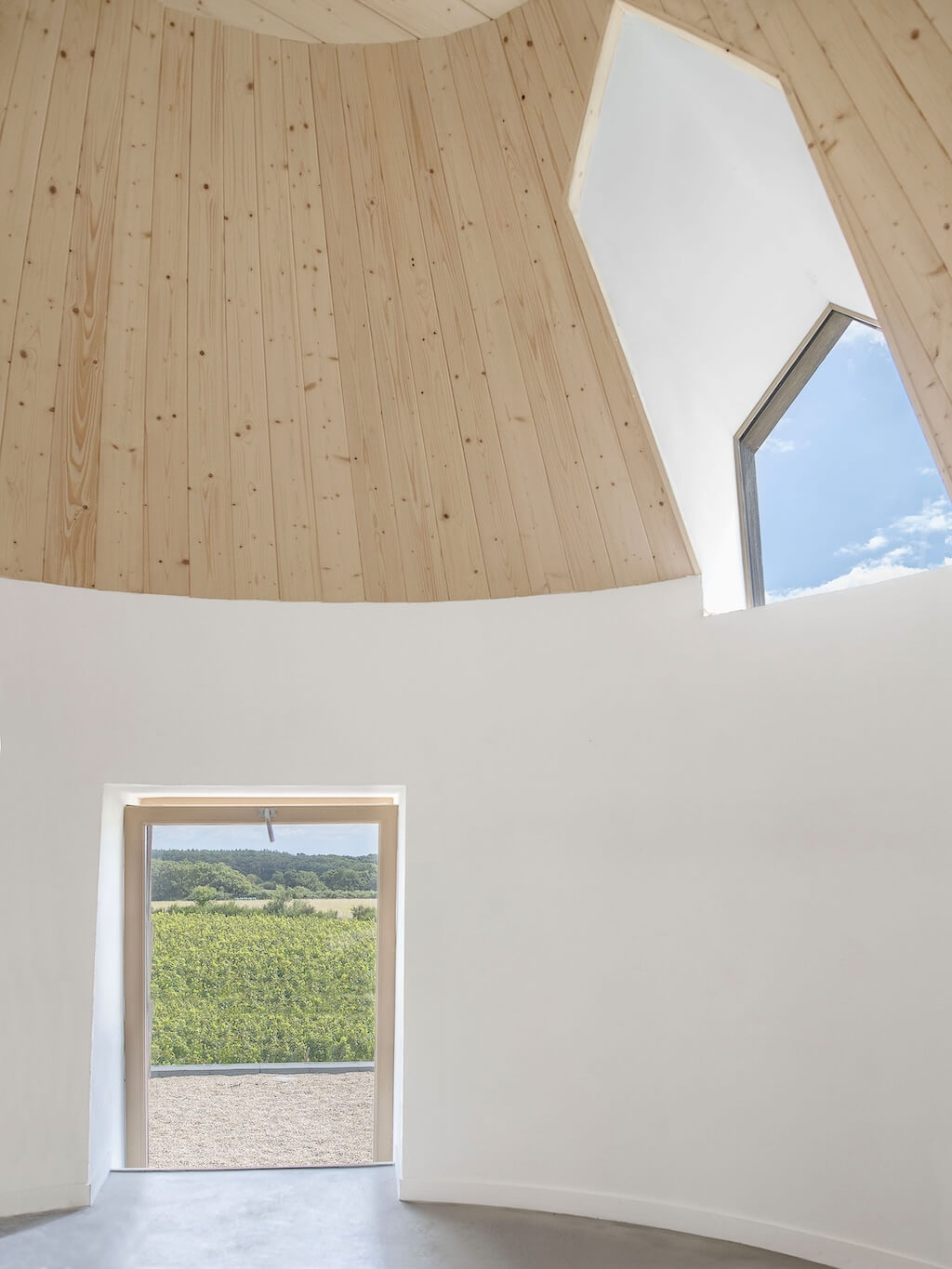
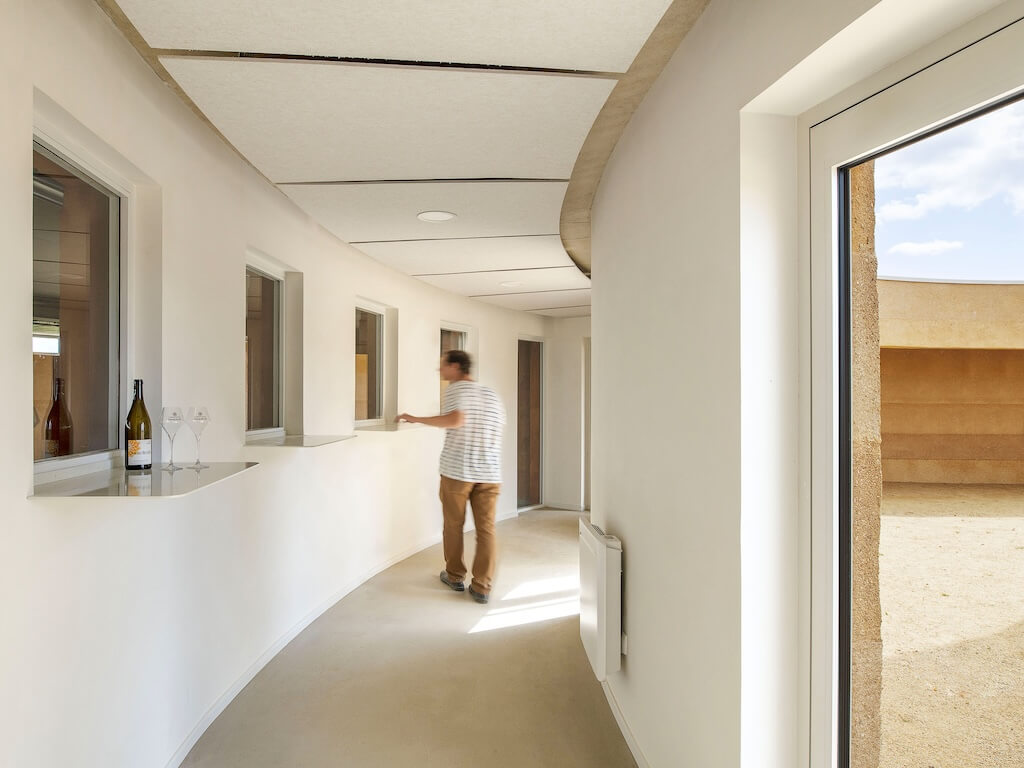
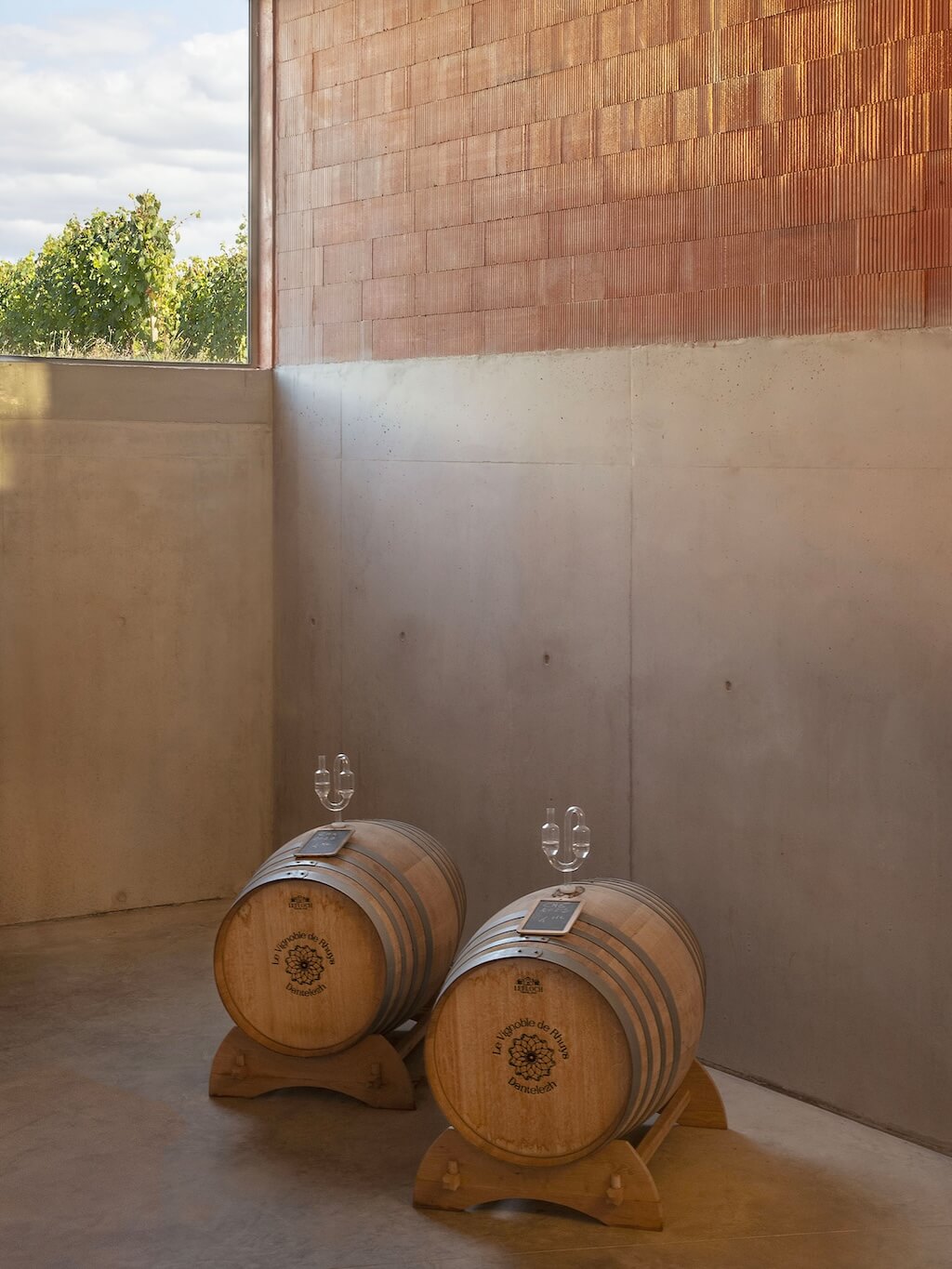

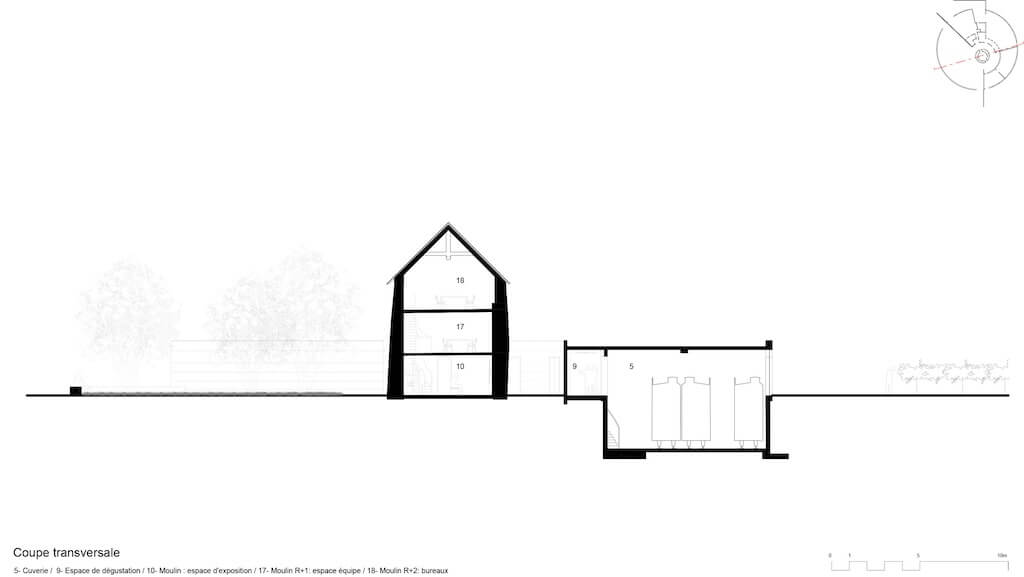

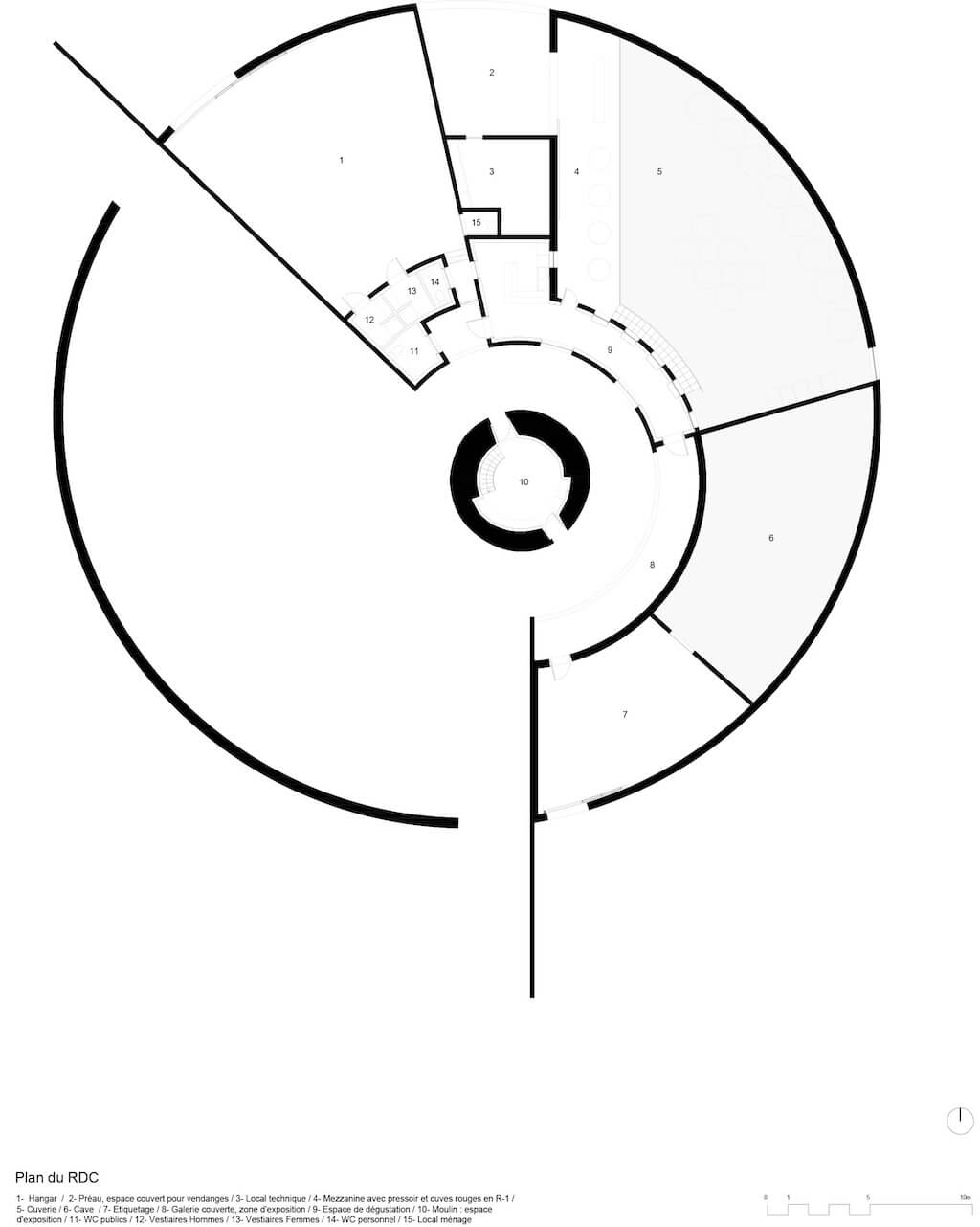
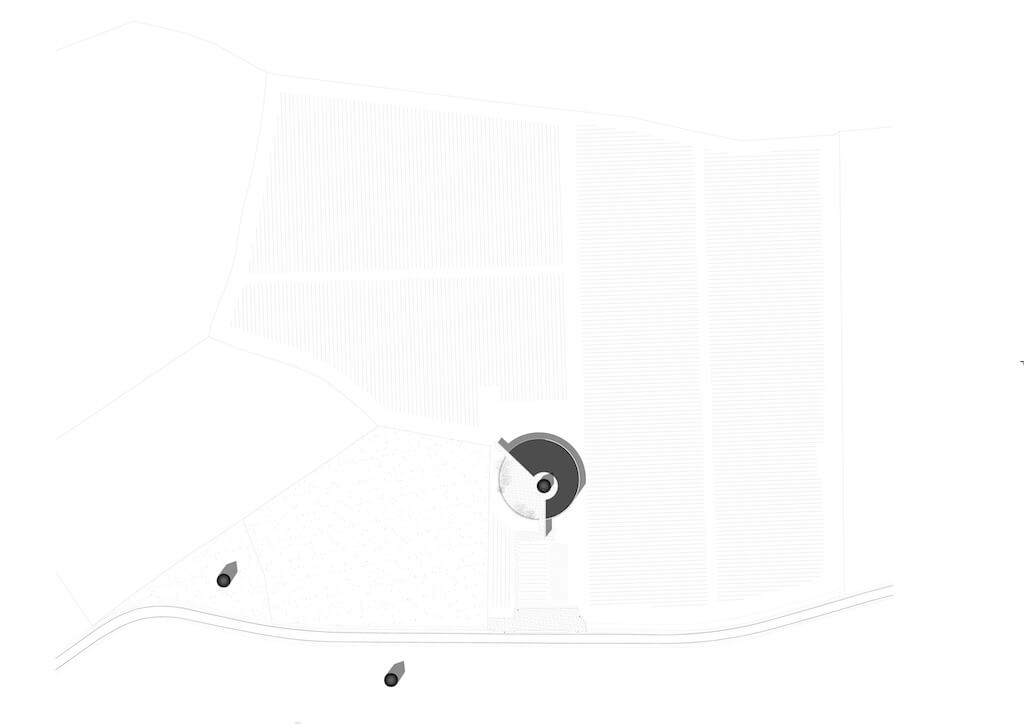
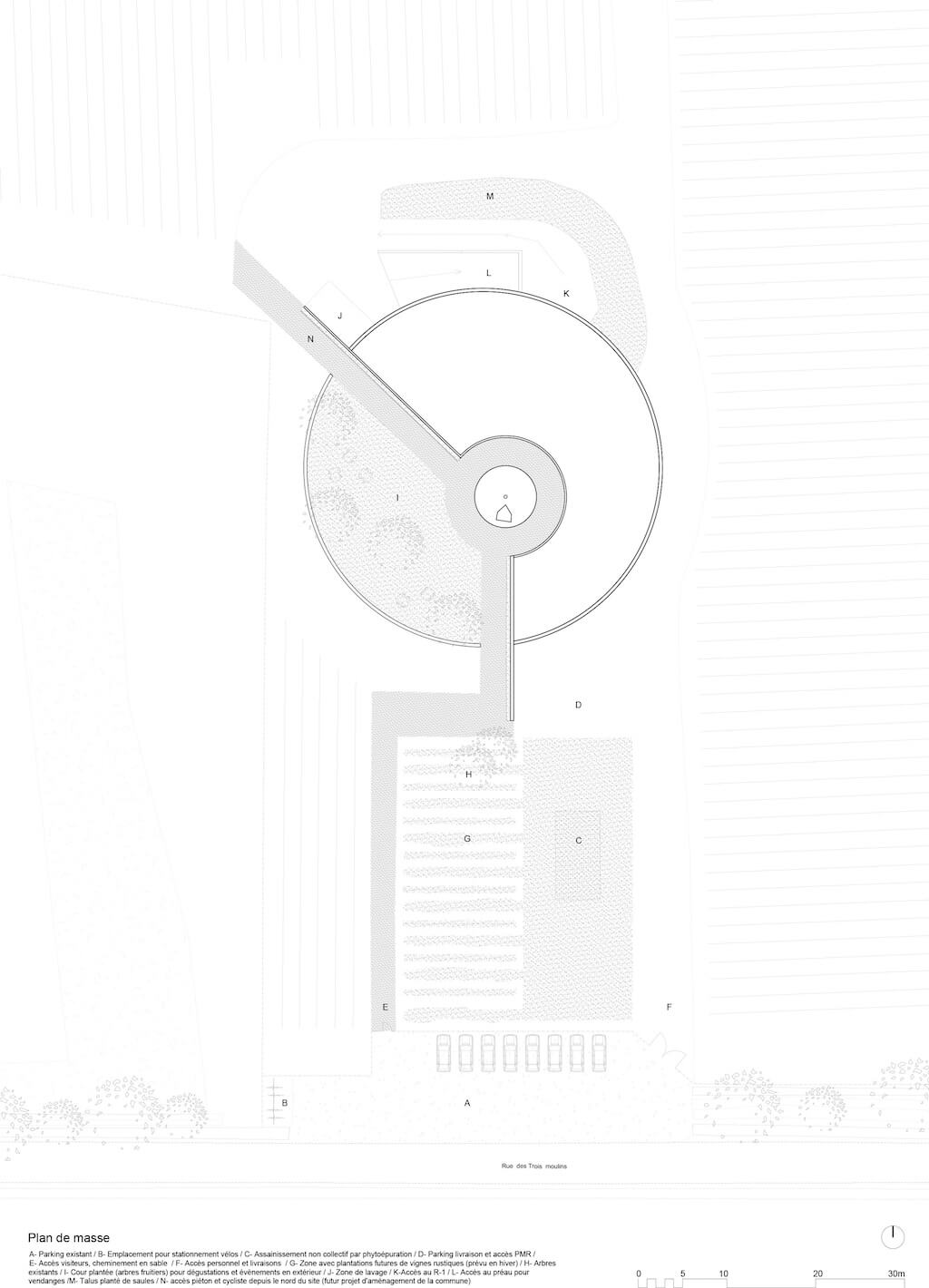
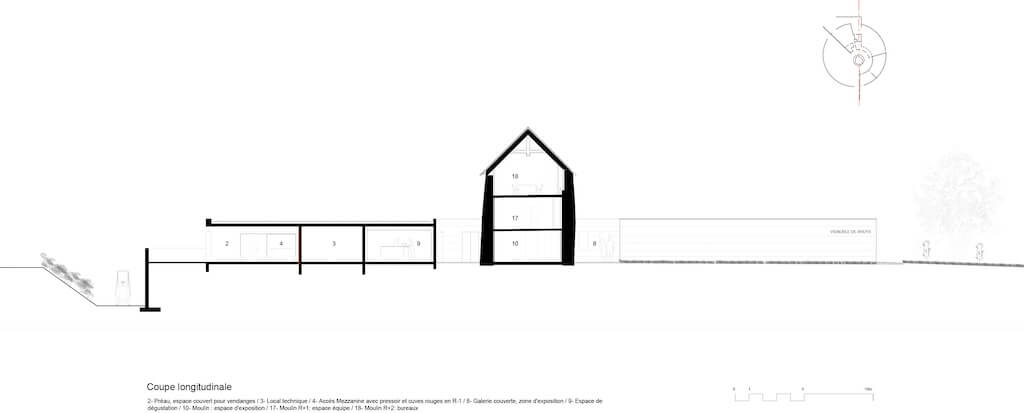

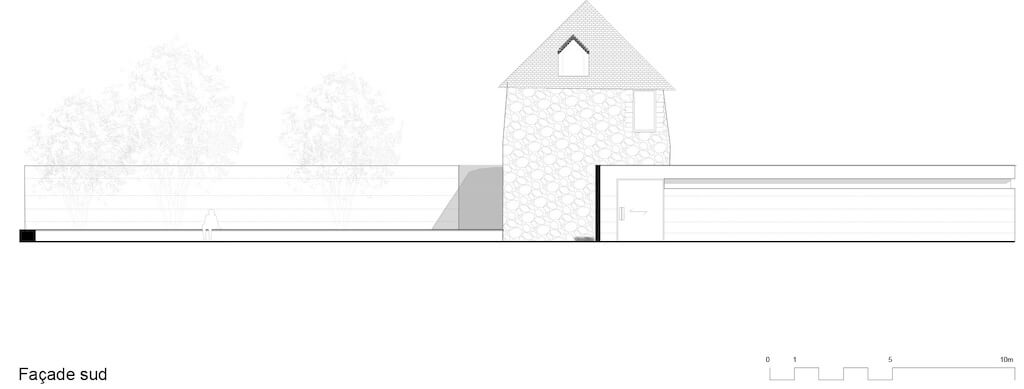

Carmen Maurice Architecture
Carmen Maurice, a graduate of ENSA Paris-Val-de-Seine, founded her company in 2020 in Vannes (Morbihan). Her design work is based on solid experience gained from working within the project management team of the construction division at PCA-Stream, contributing to the renovation and restructuring of a former military barracks in Paris (9th arrondissement). This experience is enriched by research, reading, and travel. Carmen places a strong emphasis on traditional craftsmanship, convinced that exploring these practices can lead to more thoughtful architecture.
Following her time with the AAPerraudin and Kengo Kuma firms, her practice is characterized by the use of natural materials, with a focus on creating a subtle and sensitive relationship between architecture and its environment. The Sarzeau Wine Cellar, the agency’s first project (public
commission in late 2020), perfectly illustrates this approach. Serving as a landmark in both space and time, this architecture embodies the firm’s core values: adaptabilite, reinvention, and elevation.

